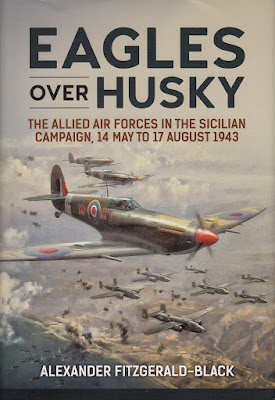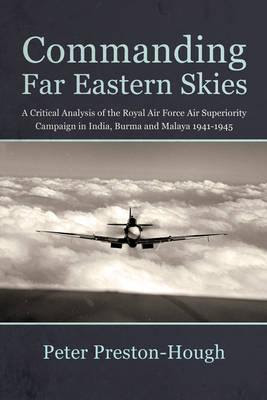Usual story, everyone, but I'm fortunate to be able to feature another guest reviewer. Colin Ford will be known to many of you as the 'Historian by Appointment' of the No. 268 Squadron Association. He is, therefore, an authority on the world of tactical reconnaissance, especially the use of the North American Mustang in the role. I first worked with Colin a few years ago when I had the honour, albeit with a good dose of dismay, of whittling down (to magazine feature length) his extensive account of two Australians who flew the Tac/R variant of the Hawker Typhoon. To say the original work, effectively an extract of Colin's 268 Squadron history, 'ADJIDAUMO "Tail in Air"', was magisterial would be an understatement. Tactical work being Colin's forte, I have no hesitation in featuring the comprehensive review below. Andy Wright.
This book sets out to tell the story of the raid by bombers of No. 2 Group, Royal Air Force, conducted against the Philips Radio Works located in two locations in Eindhoven in the Netherlands on 6 December 1942. The raid was conducted at low level by Douglas Bostons, Lockheed Venturas and de Havilland Mosquito bombers, escorted part of the way by Supermarine Spitfires of RAF Fighter Command.
The origin of the book lies primarily with the two listed Dutch researchers and authors who live in Eindhoven – one who, as a young child, witnessed the raid and its aftermath; the other the son-in-law of another witness. They sought to set out the details of the day from various perspectives, that of the attacking aircrew, the Dutch civilians and responding Dutch civil defence and emergency services personnel on the ground, and, to a lesser degree, the defending German personnel with various Luftwaffe and anti-aircraft units. Therefore, it draws on much original material held in various archives, along with immediate post-event interviews and interviews conducted some years afterwards. It is in part a tribute to those who took part in the raid, the Dutch civilian casualties and emergency services workers.
The third member of the team, in the UK, also had family connections via a family member who flew with one of the squadrons participating in the raid. He combined his research to produce this edition of the book in English.
Operation Oyster was one of the first, if not the first, large scale, multi-squadron raids, utilising most of the operational strength of 2 Group, to attack a target in occupied Europe in what could be considered a ‘precision strike’, largely flown and conducted at low level. Its target, two factories of the Philips Radio Works in Eindhoven in the Netherlands, was intended to remove a source of critical electronic components, especially radio valves, produced in the factories and utilised by the Germans in a range of military electronic equipment, including radar units. The target was one of a number, identified by special technical committees in the British Government, of facilities producing items of great military value to the German armed forces and where interruption to supply of these items would have an adverse effect on the German military. The final choice of target was in part dictated by its location and, being within striking range of the aircraft of 2 Group, the ability of Fighter Command to provide some escort to and from the target area, the nature of the target, including potential for civilian casualties for those living in areas around the factory complexes, and the vulnerability of the manufacturing plant to the weight and type of ordnance to be delivered from low level by the attacking aircraft.
The book does give a degree of detail and devotes a short chapter to the diversionary operations conducted by heavy bombers; B-17s and B-24s of the USAAF, escorted by Spitfires from multiple RAF fighter wings, and one USAAF fighter group operating Spitfires, against a range of targets in northern France and Belgium (primarily Luftwaffe airfields and transportation nodes). These operations were designed and timed to draw Luftwaffe fighter units away from the incoming Eindhoven raid. Other diversionary operations conducted by the RAF over other areas of the Netherlands, Belgium and northern France, as a part of the overall plan in support of the raid, receive scant or no coverage.
Potentially because the research and writing of this book was a ‘labour of love’ for the two primary Dutch researchers/authors, it comes across in part as uneven in its coverage and understanding of the events associated with the raid. There are, in some parts, some basic errors in relation to details provided of the 2 Group aircraft types involved; looking at the aircraft type references quoted as sources, many are quite dated. There is no appreciation or insight into the senior RAF officers who were involved in the initiation of the plans to raid the Philips Works at Eindhoven, the raid’s planning and eventual decision to mount the operation. Lastly, the coverage of the action from the perspective of the various 2 Group squadrons is somewhat patchy and tends to focus on only a couple of the units involved, possibly a result of availability, or lack of it, of material in the archives used in their research and access to surviving personnel for interviews, their personal material or published memoirs. Where RAF aircrew material is included, it is interesting to see the different perspectives on the lead up to the raid, its conduct and aftermath, depending on the role the participant played and the type of aircraft they flew.
Where the book does shine is in the level of detail and coverage of the raid from the perspective of the people of Eindhoven who were eyewitnesses, which includes firsthand accounts drawn from many sources, including the archives of the Philips Company, which operated its own fire brigade and emergency services within the two factory complexes, as well as survivors of the raid. The impacts of the raid on the production of the two complexes in Eindhoven, and the consequences arising from that, are also well covered. The danger to factory workers being deported to Germany and the loss of skilled workers to the demands of the Todt organisation after the raid, while repairs were made to the two factories, were well appreciated by Philips management and the measures they took to protect their staff is another aspect covered.
The narrative is well supported by maps showing the key geographical locations covered in the book as well as the routes used by the 2 Group bombers. A wide selection of photographs is also included, some taken by the strike cameras fitted to the bombers and others showing the damage to the various factory buildings and surrounding areas.
This book fell a bit short of what it could have possibly achieved as a work focussed on a specific raid, its planning, conduct, aftermath and the events surrounding it. The coverage and sources used as noted are patchy in parts, yet excellent in other parts. It is that lack of consistency that detracts from the end product.
ISBN 978-1-39901-9-767










